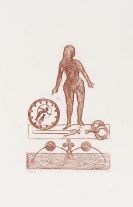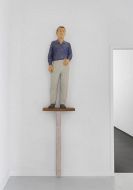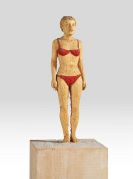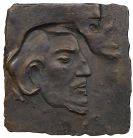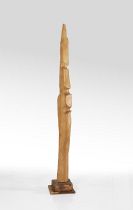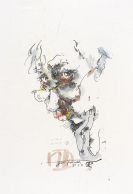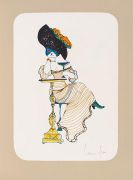
Max Ernst
Brühl
1891 -
Paris
1976
Max Ernst initially studied art history. When he met August Macke in 1910 he began to paint autodidactically, but his fascination with Macke's Expressionist style did not last very long. Upon his return from World War I, Max Ernst was convinced that the traditional aproach to art was no longer up-to-date.
In 1919 this realisation lead to the foundation of the group of cologne Dadaists together with Arp. In the 1920s Max Ernst joined the Paris Surrealist movement. His works then contained fantastic-mythical images with visionary landscapes, forest and bird-like animals, and fantastic shellflowers.
Max Ernst soon worked in a collage technique, combined with alienation and non-related images and objects, and thus created a new and often absurd meaning.
In 1925 Max Ernst studied "écriture automatique", an automatic, uncontrolled writing, motivated by the subconscious, employed by Surrealist writers. Ernst considered "Frottage" to be an adequate painting technique. He placed a sheet of paper on strongly structured, reliefed surface and rubbed the structures on the paper with a soft pencil or crayon. These mystic, unaware and uncontrolled forms thus lead to new image ideas.
Max Ernst spent the summer of 1934 together with Giacometti, which awakened his interest in the sculptural. He made his first three-dimensional version of his omnipresent bird motif and enthusiastically experimented in this area. Max Ernst modelled sculptures into which he stuck objects of everyday use and had them cast in bronze. There were phases in which he created mixed creatures between plant, animal and human as a synthesis between real and modelled images. The largest of these composite sculptures is "Capricorne", a sculpture cast in concrete, which he set up in front of his house in 1948.
His graphic series "Histoire Naturelle", "La femme 100 Têtes", "Rêve d'une Fille" and "Semaine de Bonté" attracted a lot of attention.
Max Ernst maintained the typical style of these series even when he lived in the USA between 1941 and 1953 and after his return to France.
Max Ernst died in Paris in 1976.
Would you like to sell a work by Max Ernst?
Infos for seller
